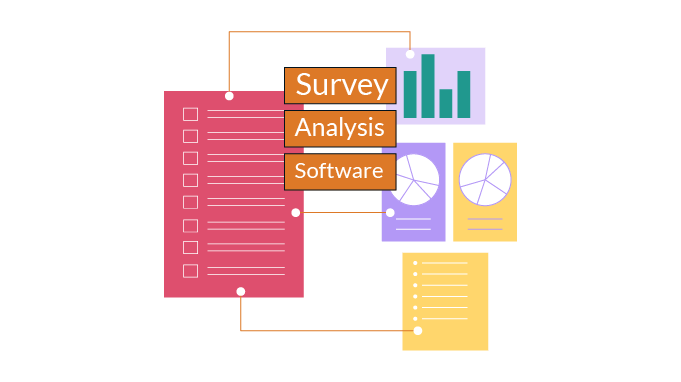How to Design an Employee Survey: Best Practices and Tips
What is an Employee Survey
Employee surveys are tools organizational leadership uses to gain feedback on and measure employee engagement, employee morale, and performance.
~ Wikipedia
Usually answered anonymously, employee surveys are also used to gain a holistic picture of working conditions, supervisory impact, and employee motivation that are not always covered by regular communication channels. The effectiveness of surveys in these areas relies on their thoughtful design, proper administration, validity, and the ability to inspire meaningful changes and improvements.
The first employee surveys, commonly known as employee-attitude surveys, surfaced in industrial companies in the 1920s. Between 1944 and 1947, the National Industrial Advisory Board saw a 250% jump in companies that chose to conduct an attitude survey (within a 3,500 company group).
Let’s face it – the old days of employers doing things TO employees instead of WITH them no longer fly. Companies thrive based on the energy and insights of their people. That’s why employee surveys have become so critical. These tools clue leaders in on what’s actually happening across their teams.
But surveys reveal more than data points. They open windows into how policies, culture and change impact people’s attitudes, effectiveness and well-being at work. As leaders, these moments matter – the feedback we need to foster an environment where folks can thrive and succeed together.
Well-crafted surveys are vital tools for organizations, revealing concealed truths by encouraging honest feedback and revealing insights that may be overlooked. They improve communication by providing a transparent channel between employees and leadership, cultivating trust through a commitment to valuing opinions and implementing action plans based on survey results. Surveys help recognize and spot diverse employee needs, enabling proactive support. They also contribute to strategic decision-making by providing valuable data for informed organizational planning.
So, join me in exploring the human stories behind survey results. Beyond stats, they represent people – their needs, growth opportunities and desire to positively impact an organization.
How to Design Employee Surveys

According to Gallup research, companies with highly engaged workforces outperform their peers by 147% in earnings per share.
Only 30% is the average response rate despite all the costs and efforts to administer employee surveys.
Define your Goals and Objectives
Before constructing your survey, precisely spell out what you wish to uncover, setting the stage for a purposeful and effective data-gathering process. Determining the survey's purpose is paramount in crafting meaningful inquiries and deriving valuable insights. Whether your focus is gauging employee engagement, assessing satisfaction levels, pinpointing specific challenges, or comprehending the broader company culture, clarifying your objectives is essential.
Are you aiming to capture the overall pulse of your workforce, address particular pain points, or foster a deeper understanding of organizational dynamics? By pinpointing these goals, you refine the survey's focus and ensure that the data collected serves a purpose in informing actionable strategies.
Having clear goals is important as it helps you choose the right type of survey, ask the right questions, and figure out what to do with the answers.
Do you want to know general stuff, fix problems, or understand something specific? Knowing your goals makes sure every part of the survey is useful and matches what you want to find out.
It's like having a guide to ensure your survey is helpful and tells you what you need to know.
Related Article: The Ultimate Guide On Employee Engagement Surveys
Choose the Right Survey Type
The average employee engagement survey only gets a 30-40% response rate, while pulse surveys enjoy an average response rate of 85%.
As powerful instruments, surveys offer diverse types specifically designed to navigate the nuances of employee engagement. This exploration into various survey methodologies delves into the intricate ways organizations can measure and uplift the spirits of their workforce.
But, not all surveys are the same. Some are quick check-ins to see how things are going now and then (pulse surveys), while others dig deep into how satisfied and motivated employees are (engagement surveys). It's like using different tools to get the full picture of what's happening at work.
Below are some key survey types that can help improve workplaces for everyone!
Pulse Surveys:
Quick and brief surveys are conducted frequently.
Pulse surveys offer bite-sized snapshots into organizational health so progress can be monitored and improvements made in near real-time based directly on employee feedback.
Unlike lengthy annual reviews, pulse surveys are short, focused snapshots administered frequently. Typical pulse survey questions gauge employee sentiment, engagement, manager effectiveness, company culture, and workplace satisfaction.
For organizations aiming for agility, pulse surveys work well because they tap into how employees feel, keeping up with their emotions and thoughts.
Employers can choose from several survey tools like Vantage Pulse for data-driven trends and analysis, accessible over multiple platforms.
Recommended Read: Top Employee Survey Tools of 2024
Engagement Surveys:
These in-depth surveys comprehensively examine employee satisfaction, motivation, and loyalty.
Evaluate overall engagement levels and identify factors contributing to or hindering employee satisfaction. Engagement evaluations take a deeper dive annually to uncover what motivates employees and hinders engagement.
Question categories typically cover everything from job fit, growth opportunities, and workload to trust in leadership, recognition, communication, and relationships with managers and colleagues. The comprehensive snapshots uncover organizational strengths to continue leveraging and pain points to improve. Survey results empower leadership to connect engagement drives to bottom-line revenue; higher engagement overwhelmingly correlates with improved retention, performance, innovation and profitability.
Engagement surveys provide crucial insights by probing all facets of the workplace experience, allowing companies to develop targeted strategies for nurturing a thriving workforce and culture.
In essence, annual engagement surveys highlight all the key factors impacting employee satisfaction, experience and empowerment – shedding light on areas working well versus issues requiring action.
Exit Surveys:
Conducted when employees leave, aiming to gather insights into the reasons behind their departure.
Employee exit surveys help uncover deeper awareness when valued team members resign. This farewell feedback assessment asks departing employees to candidly evaluate their reasons for leaving and their overall experience. They help provide constructive criticism regarding an organization's successes versus drawbacks so that suitable reforms can be executed for the future. The goal is to learn from departing employees how to enhance the workplace and minimize preventable turnover.
Common exit survey topics range from career growth and development opportunities to compensation and benefits satisfaction, workplace culture and relationships, leadership trust and support, workload and work-life balance, and general employee experience.
360-Degree Feedback Surveys:
Collect feedback from multiple sources, including peers, managers, and direct reports.
360-degree feedback surveys gather insights from all angles for individual employees, including supervisors, direct reports, coworkers and sometimes external stakeholders. This in-depth evaluation aims to provide neutral, balanced feedback highlighting strengths and development needs. It paints a holistic picture by including feedback from different perspectives, giving an all-around view of the strengths and areas for improvement. It's a tool designed for personal and professional growth, ensuring everyone has a say in helping each other succeed in the workplace.
Participants rate skills in key areas like communication, leadership, teamwork, and problem-solving while providing qualitative observations.
Each type of survey serves a distinct purpose, offering valuable insights into different aspects of the employee experience and organizational dynamics. Tailoring the choice of survey to the specific goals ensures a more targeted and effective approach to gathering feedback.
Craft Effective Survey Questions
20% abandon rates for surveys that take more than 7-8 minutes to complete
Creating good survey questions is like making sure you ask things in a way that gets you helpful answers.
Here are some simple tips:
- Easy to understand:
Make your questions easy to understand. Don't use fancy or confusing words. - Ask About One Thing at a Time:
Each question should be about one idea. Don't mix up different things in one question. - Be Fair and Neutral:
Use words that don't push people to answer in a certain way. Be fair and neutral in how you ask. - Give Choices that Cover Everything:
If you're giving choices for answers, make sure they cover all possibilities. Don't leave anything out. - Use Different Types of Questions:
Ask questions in different ways. Use yes/no, multiple-choice, and questions where people can write their own answers. - Try Out Your Questions:
Before you ask many people, try your questions with a few first. This helps you see if they understand and if the questions make sense. - Think About the Person Answering:
Put yourself in their shoes. Ask questions that make sense to them and use words they'll understand. - Mix Up Positive and Negative Questions:
Don't only ask about good things or bad things. Mix it up. It gives you a better picture. - Ask What People Think:
Include questions where people can say what they think in their own words. This helps you understand more. - Make Questions go in Order:
Arrange your questions in a way that makes sense. One question should lead to the next smoothly.
To better understand, you can go through our Unlocking Insights:: The Ultimate Survey Question Template blog.
Design the Survey Platform

Designing a survey platform is about crafting a welcoming space for people to share their perspectives comfortably. The goal is to build an easy, secure survey where employees feel comfortable sharing their thoughts and opinions.
Follow these 5 tips to create an accessible, simple, and secure survey experience:
- Easy to Use for Everyone:
Make it Super Easy to Use Ensure it works great on phones, tablets, computers—whatever people use. Please test it out everywhere to make sure it's simple for all.
Test it on different devices to make sure it works well everywhere.
2.Keep it Simple:
Keep it quick so the respondents don't lose interest or feel tired. Only ask what you need to know.
Choose the type of survey that fits well with the info you want without making it too long.
-
Ensure Confidentiality:
People might be more honest if they know their answers are private. So, keep everything anonymous and make sure their data is secure. -
Choose the Right Type:
Align survey objectives with format—multiple choice, open response, ratings—that fits what information you want to gather. Think about the type of survey that works best for what you want to know.
Tailor the questions and length based on the type of survey you've chosen. -
Feedback is Key:
Ask people for feedback on the survey. What did they like or find hard?
Use their feedback to make the survey platform better over time.
Remember, the goal is to make it easy and comfortable for people to share their thoughts while keeping everything private and secure.
Culture Monkey,Vantage Pulse,Survey Sparrow,and Workday Peakon are some of the top-rated survey tools you can opt for.
Promote the Survey
Promoting a survey effectively involves creating awareness, generating interest, and encouraging active participation. Encouraging survey participation involves disseminating information and inviting individuals to express their opinions.
Here are some easy steps that you can refer to while promoting:
- Clear Communication:
Communicate the purpose, benefits, and importance of the survey. Ensure employees understand why their input matters.
- Choose the Right Channels:
To reach a diverse audience, utilize various communication channels such as email, intranet, social media, and company meetings.
- Use Engaging Materials:
Design appealing posters, emails, or social media posts to grab attention. Use attractive colours and images that align with the survey's purpose.
- Highlight Incentives:
Suppose there's something in it for them, like a chance to win a prize or get useful insights; highlight that! If applicable, emphasize any incentives for participating in the survey. Incentives can motivate and increase participation rates.
- Personalized Invitations:
Send personalized invitations. People are more likely to respond when they feel a personal connection. Use friendly and inviting language in your messages.
- Progress Update:
Provide regular updates on the survey's progress. This keeps people interested and lets them know their input matters. It could be a simple thank you message or sharing early insights.
- Use Multiple Reminders:
Send friendly reminder messages as the survey deadline approaches. Reminders prompt those who haven't participated to take the survey.
- Make it Easy to Access:
Ensure the survey link is easy to find and access. If people have to search for it, they might lose interest. Ensure the survey is easily accessible on mobile devices. Many employees prefer taking surveys on their phones, so make it convenient.
- Feedback Mechanism:
Provide a platform for participants to ask questions or seek clarification about the survey. Addressing concerns promptly can increase confidence.
- Express Gratitude:
Express gratitude to participants and recognize their contributions. Showing appreciation is vital, whether through a thank-you message or a small acknowledgement.
Analyze and Interpret Results

As per an AON Hewitt report, 63% average engagement score when managers review identify actions from survey results
Analyzing and interpreting survey results is a crucial phase in the feedback process. It involves data analysis tools to uncover patterns, trends, and insights from the collected information. It is necessary to do a thorough examination of specific responses and subgroups. Organizations can prioritize actions based on the most impactful findings by identifying areas of strength and weakness. The goal is to extract meaningful conclusions from the data and comprehensively understand the surveyed aspects. This process helps strategic decision-making and implementing targeted improvements within the organization.
Here's how you can do it-
- Use Data Analysis Tools:
Employ statistical tools and software to analyze survey data efficiently. Tools like Excel, SPSS, or dedicated survey platforms can assist in organizing and interpreting results.
- Focus on Patterns and Trends:
Search for consistent patterns or trends within the data. Recognize similarities and differences among various survey responses.
- Explore Subgroup Differences:
Divide the data based on demographic factors or relevant subgroups. Examining variations among groups can offer deeper insights into particular areas of focus.
- Consider Qualitative Responses:
If the survey includes open-ended questions, analyze qualitative responses for recurring themes or sentiments. Qualitative data can offer valuable context and nuanced perspectives.
-
Prioritize Key Findings:
Identify key findings that stand out during the analysis. Prioritize these findings based on their significance and potential impact on organizational goals. -
Look Beyond Averages:
While averages provide a summary, it's advisable to dig deeper into the distribution of responses. Understanding variations is the mainstay in comprehending the diversity of opinions. -
Compare with Benchmark Data:
Match employee responses against previous surveys or external benchmarks. Track if scores are trending up, down or aligning with the industry. This helps interpret the numbers and provides a more comprehensive understanding of performance. -
Identify Areas of Strength and Improvement:
Pinpoint areas where the organization excels and areas that require improvement. This balanced approach ensures a strategic focus on enhancing overall performance by effectively leveraging existing strengths and addressing weaknesses.
- Quantify Qualitative Insights:
If feasible, give numerical values or codes to qualitative insights to make them measurable and comparable.
- Consider External Factors:
Consider any external factors that might have affected the survey responses. Understanding external influences provides a more nuanced interpretation.
- Seek Correlations:
Check for data correlations. Do scores on certain questions connect to other factors? If yes, explore why and how. Linkages point to deeper issues. For example, below-average advancement opportunities tied to higher quitting intentions could spotlight better retention tactics. Discovering relationships can unveil hidden insights and guide targeted interventions.
-
Involve Stakeholders:
Collaborate on insights, findings by stakeholders at all levels—leaders, staff, and cross-functional partners. Different lenses bring fresh perspectives and help uncover deeper wisdom through others' eyes, enabling better solutions. -
Formulate Actionable Recommendations:
Turn findings into practical recommendations. Develop a set of strategic actions based on the analysis to drive positive organizational change.
For example, If communication issues were flagged, outline ideas to fix them. If lower scores are linked to turnover, propose retention solutions. Essentially, translate insights directly into recommended next steps.
- Communicate Transparently:
Communicate findings clearly across all teams. Highlight major takeaways. Give context on results and impact on roles.
Present action plans to respond to feedback. Explain the next steps aimed at improving identified priorities. Transparent sharing builds understanding and collaboration, which are essential for driving change.
It allows people to feel heard while aligning everyone on what's next.By following these pointers, organizations can navigate the process of analyzing and interpreting survey results effectively, leading to informed decision-making and targeted improvements.
Communicate Results and Follow up
While sharing survey results, keep in mind the following-
- Share the News:
Tell everyone about the key findings from the survey. Use simple language for everyone to understand.
- Be Open and Honest:
Be transparent about both the good and not-so-good results. Honesty helps build trust.
- Create Plans for Action:
Figure out what needs fixing or improving. Make plans with clear steps to get things on track.
Imagine you're making a plan with friends for a successful event.
- Assign Tasks:
Give specific tasks to the right people. This way, everyone knows what they need to do.
- Set Timelines:
Decide when each task should be done. Having timelines helps keep things moving forward.
-
Check Progress:
Keep an eye on how things are going. Regular check-ins ensure everything is going as planned. -
Get Feedback and Adjust:
Ask for thoughts and feedback along the way. Be ready to adjust plans if needed.
It's like checking in with friends to see if they're having a good time.
- Celebrate Success:
When things improve, celebrate! It could be a small win or a big achievement.
Communicating results and following up is about keeping everyone in the loop, working together to make positive changes, and celebrating successes.
Finally
Simply put, when companies ask good, clear questions and ensure answers are anonymous, they can learn a lot from surveys. It's also important to make the survey easy to use on phones and computers and to tell everyone about it. It's not over until a thorough study is conducted on the results, and making changes based on feedback is just as important. Overall, doing surveys the right way helps make the workplace better and keeps making improvements.

















